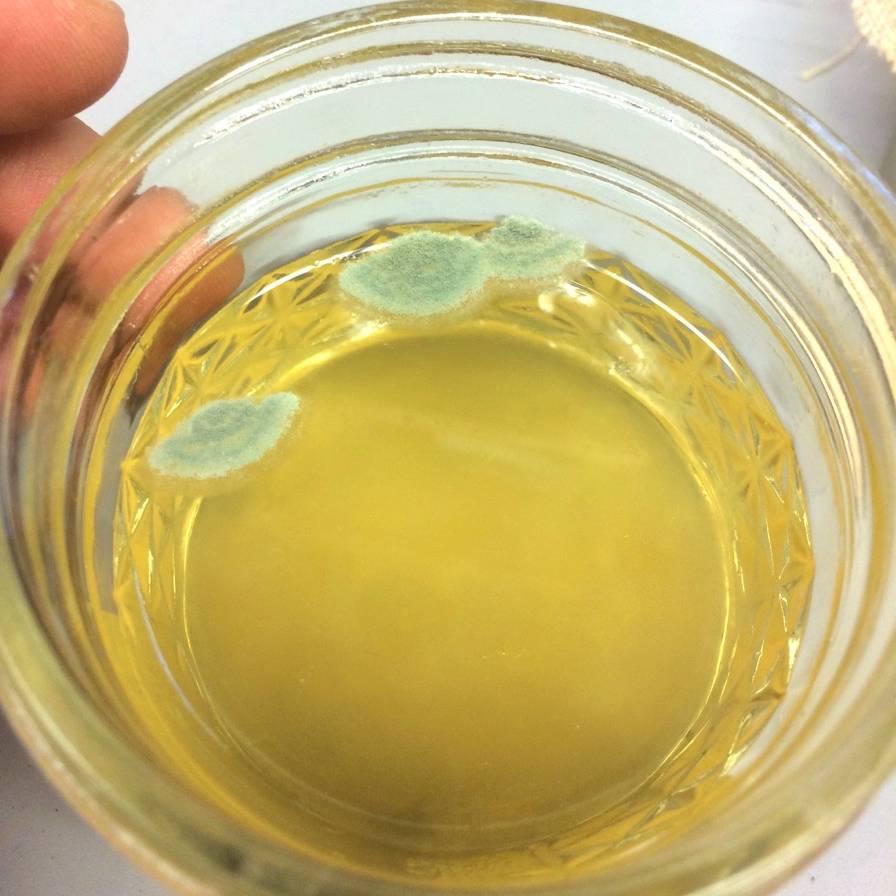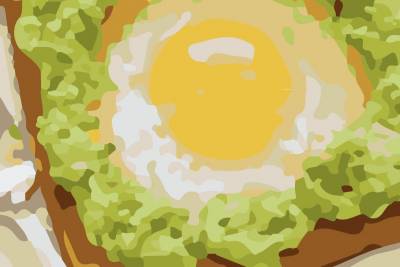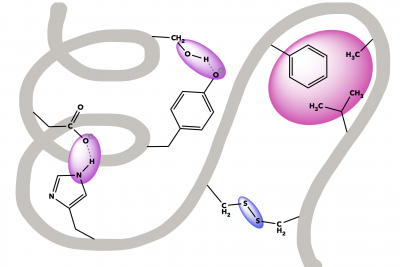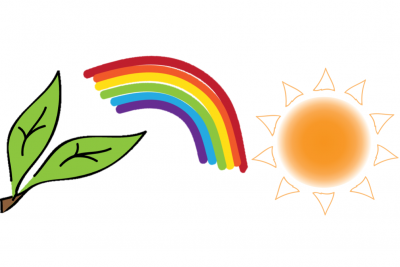Can I drink kombucha? Is it healthy for me?
What is Kombucha?
From a culinary standpoint, kombucha is a type of fermented beverage, made using tea, sugar, and water. Humans have been consuming kombucha for over two centuries, with it’s ancient origins mapping back to Asia. Despite kombucha’s rich anthropological history, this ferment has only recently entered mainstream supermarkets in the United States.
As the culinary popularity of kombucha grows, scientists are also realizing its potential as a model system. Central to the beverage is the formation of microbial communities, the understanding of which remains fairly incomplete to microbiologists. Furthermore, the solid portions of the kombucha culture (i.e. the SCOBY) are being explored by materials chemists as well as by designers and artists in order to test potential applications.
What makes kombucha a ferment?
Tea and sugar by themselves are just that — tea and sugar. It is only through the presence of microbial communities that the tea and sugar are transformed into kombucha. More specifically, the kombucha microbes engage the process of fermentation to convert the table sugar (sucrose, a type of carbohydrate) into cellular energy (ATP). Fermentation, however, produces more than just energy. The process of fermentation also creates metabolic byproducts such as CO2, ethanol, acetic acid (vinegar), and cellulose. It is these byproducts that give ferments their characteristic flavors and textures.
Additionally, fermented foods are a literal microbial breeding ground — as more carbohydrates become available, greater numbers of microbial cells can be supported. This means more cell division, and the expansion of the microbial communities. If adequately cared for, a single kombucha culture could, in theory, be maintained indefinitely.
Putting Kombucha in Context

As mentioned above, a hallmark of any culinary ferment is the presence of (favorable) microbial communities that provide the desired flavors and textures humans have come to enjoy. With increased appreciation of the role microbes play in human health and wellness, many within the scientific community are exploring how fermented foods impact the human microbiome. While scientific and clinical studies are still in their early stages, making it difficult to reach definitive conclusions around the health benefits related to consuming fermented foods like kombucha, ferments are touted as “healthy” additions to someone’s diet. Let’s explore this further.
What is a microbiome?
With the advent of next generation sequencing, scientists are beginning to scratch the surface when it comes to the elusive microbiome. Currently one of the hotest topics in biology, the microbiome refers to the collective set of genetic material from the communities of microbes that live in, on, and around you — or a plant, or an insect, or a mole rat… Basically, microbes are everywhere, and have lived in symbiotic relationships with all lifeforms throughout the entirety of evolutionary history.
Microbes like bacteria, yeast, viruses, and bacteriophages can be found throughout our bodies, but are especially abundant in the digestive tract where they find an ample source of food, water, and a warm, cozy home. Unlike pathogenic, or disease causing microbes, these organisms give something back to their host as mutualistic symbionts. Some valuable (to humans) functions performed by these microbes include maintaining water balance, digesting foods, and absorbing vitamins. Every person has a unique microbiome, and scientists are actively researching the diversity and possible benefits of specific microbial profiles.
What is a probiotic?
Many within the health and wellness communities categorize kombucha and other fermented foods as probiotics. A probiotic is any group of presumably beneficial microbes introduced into the human body. Probiotics are found in many forms — they can be introduced as either liquid or solid form, and from a variety of food products like yogurt, kimchi, kombucha, or pickles. Some companies market probiotics in pill form, though it is not clear if these supplements actually contain what is described on the label, nor is it clear if the microbes contained in these supplements are functionally active, or if they have the ability to impact our microbiome in any way. Humans first exposure to probiotics occurs in the womb, and continues to diversify after birth. Infants also gain an enormous array of beneficial microbes through breast milk.
In the United States, government regulation of probiotics is complex, and how they are classified is highly dependent on the intended use of the probiotic. Generally speaking, probiotics can be regulated as either a dietary supplement, a food product, or, in few cases, a drug. In any case, no one can make specific health claims — like “reduces risk of [insert disease or condition]” — without approval from the Food and Drug Administration (FDA).
Is kombucha healthy? Should I drink it?
Many commercial kombuchas have been treated with pasteurization, a process that uses high heat to kill microbes. If the tea is pasteurized, the beneficial microorganisms will be killed and therefore can no longer take up residence in the body. However, if the kombucha is unpasteurized, the bacteria and yeast will be alive — consuming nutrients, reproducing, and possibly providing benefits humans. The health benefits of kombucha have not been clinically proven. The liquid is cloudy because of the live cultures of bacteria and yeast. However, unpasteurized liquids can carry risk of contamination, meaning that pathogenic microbes might be in the product. This is especially true if the probiotic is not made in a sanitary fashion (1).
So while unpasteurized kombucha might provide some health benefits, it may also make a person ill if it is contaminated with pathogenic microbes.
How do I know if my kombucha culture is contaminated?

While it is not possible to know the specific species of microbes present in kombucha cultures without the use of next generation sequencing technologies, there are some visual cues that can indicate unfavorable microbial colonization (i.e. contamination). The main culprits are likely unwanted bacteria and molds, which can look vastly different from what we are used to seeing in SCOBYs and liquid kombucha cultures. If microbial growth looks “fuzzy” or resembles a blueish-green color, chances are that your kombucha culture is indeed contaminated. The picture on the right is an example of a contamination in liquid kombucha culture.
What’s the difference between yeast and mold?
Yeasts and molds are types of fungi, though they are different organisms. Yeasts are single-celled, and those that are usually found in fermented products are typically harmless and well-characterized (i.e. Sachharomyces cerevisiae, which plays major roles in bread making and brewing beer). Molds, however, are multicellular, filamentous organisms, and generally should not be consumed. Molds will ruin a ferment, and a sample with mold should be disposed of safely. You can see samples of what mold looks like compared to yeast here. In general, yeasts are generally translucent to white, and although mold can also be white, it can also have other hues. Blue, gray, red/pink, orange – the presence of color is a strong indication of mold.
So, should I drink kombucha?
The benefits of antioxidants in green and black tea are well known and supported by clinical studies. Many people believe that the probiotics in kombucha provide health benefits, but this has not been supported by data. Even though people have been drinking kombucha for thousands of years, it is possible that drinking unpasteurized or home grown kombucha could present health risks. If you wish to try kombucha, choose a reputable distributor to ensure that your kombucha was produced in a sanitary environment and has not been contaminated. As for the health benefits, wait and see or drink and believe!
YOUR ASSIGNMENT: How would YOU talk about the health effects of kombucha with your friends or family?
Communicating science requires the balance between sharing exciting preliminary findings and being cautious of the tentative nature of the work. Many times, scientific studies are performed in a very specific context, and before generalizations to broad populations can be made, more studies are often needed to increase our certainty and confidence in the scope of the work. Furthermore, any biology involving humans is further complicated by the variations in individuals and contexts.
Here’s your challenge:
You have just been contacted by your local paper/favorite blog/most popular YouTube channel/etc. asking for your scientific expertise on the health benefits of kombucha.
Prepare a sample communication (article, blog post, audio clip, video, etc.) that you would feel comfortable sharing with them in order to present yourself as a science expert while also being engaging. Who knows💁, maybe this will lead to your future career as a YouTube star!









